Knots that actually hold
Some knots in common use have never been all that good. Others have grown less secure as we’ve turned to synthetic ropes. These ropes are strong and resist rotting, but they’re a bit slippery. So we just can’t keep depending on knots that kinda sorta worked with the tarred hemp ropes of the 19th century. Here’s a list of loops, shanks, bends, bindings, and hitches that’ll actually hold in modern rope.
FYI, the worst offenders are the sheepshank, sheetbend, half-hitch, clove hitch, and shoelace knot.
Fixed loops
-
Zeppelin loop. Use at the end of a rope in place of bowline loop.
-
Flemish loop. Use at the end of a rope or in the middle. One of the fastest fixed loops to tie and, with its figure-eight shape, the easiest to verify. A bit of a pain to untie after stressing though.
-
Alpine butterfly loop. Use in place of Flemish loop in the middle of a rope, if ease of untying is important.
Shanks
- Butterfly shank. Use alpine butterfly in place of sheepshank, which is the best known but most unreliable of shanks, lest you die.
The point of a shank is to bypass a section of rope that is damaged or overly long. A shank that easily shakes loose obviously won’t do.
Bends
- Simple-Simon-under bend. Use in place of sheetbend for joining slippery or dissimilar ropes. About as easy as the name suggests. Its ends are tidily parallel to its standing parts, convenient if you have to reeve the knot through an eye.
- Vice-versa bend. Use in place of sheetbend for joining stretchy rope, even bungee line. Tidy like the Simple Simon.
- Butterfly bend. Use alpine butterfly in place of sheetbend wherever ease of untying after extreme stress is valued more than reevable tidiness.
- Zeppelin bend. Use anywhere that you might use the butterfly bend, especially in stretchy rope. The least reevable of the bunch, but the most easily untied.
I tested the security of eight bends for comparison. See results.
Bindings
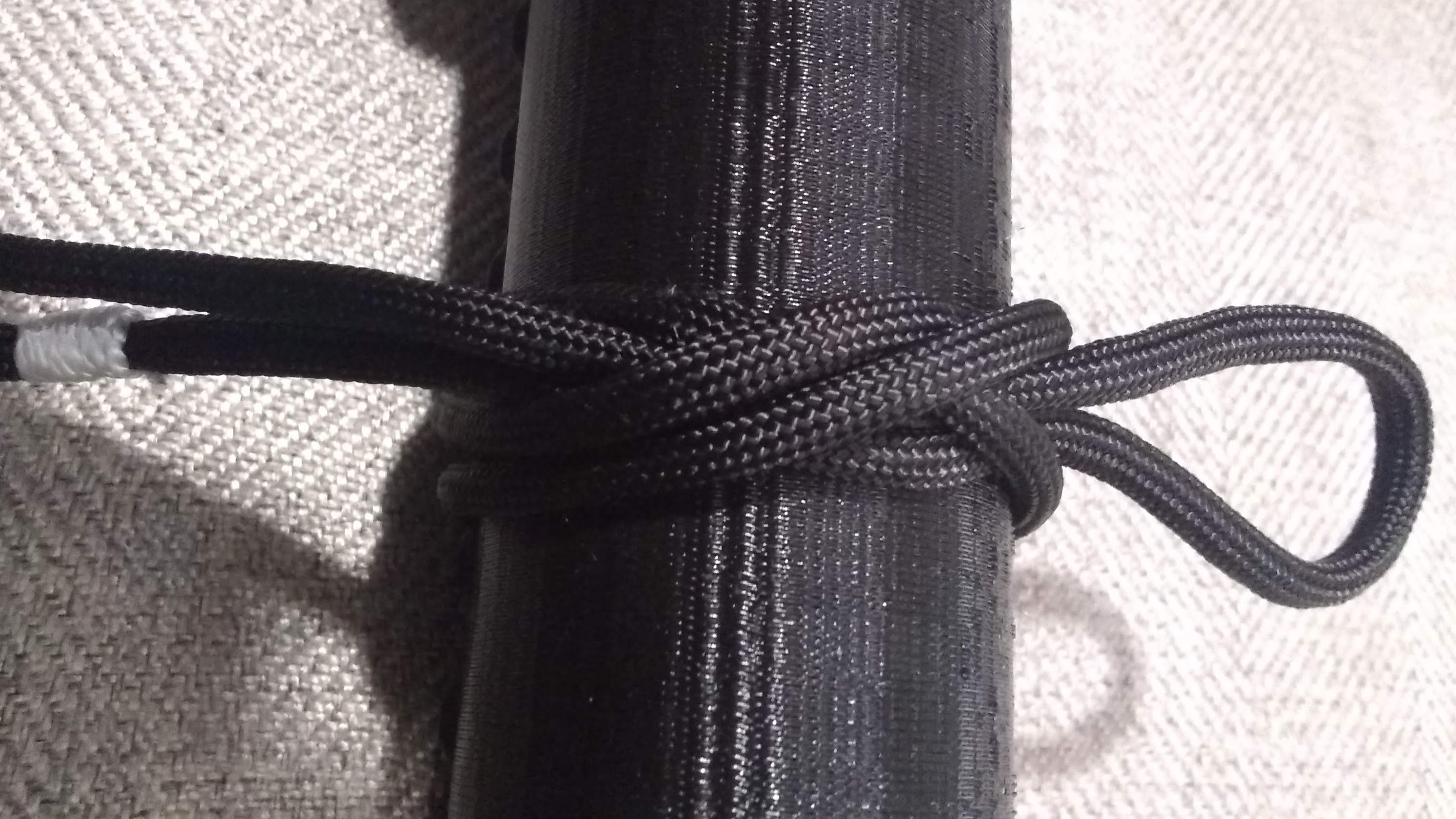
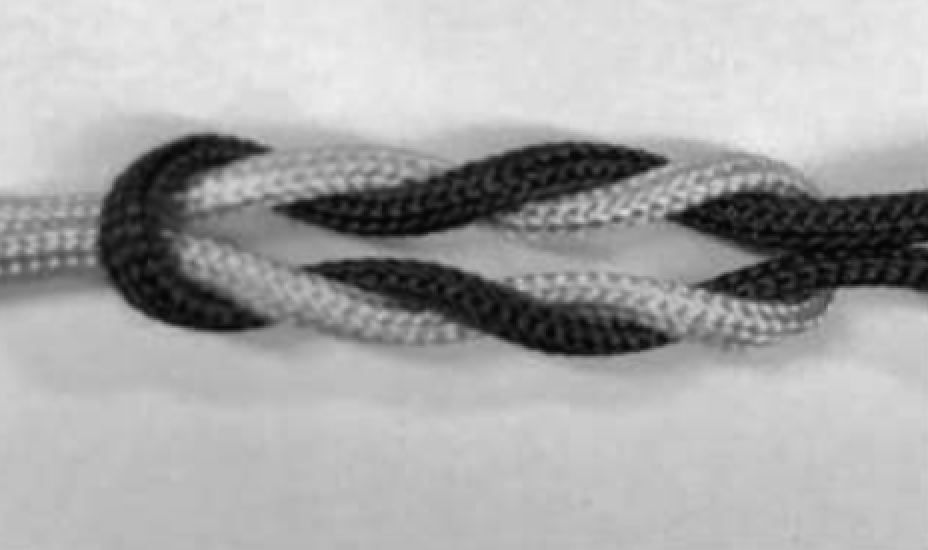
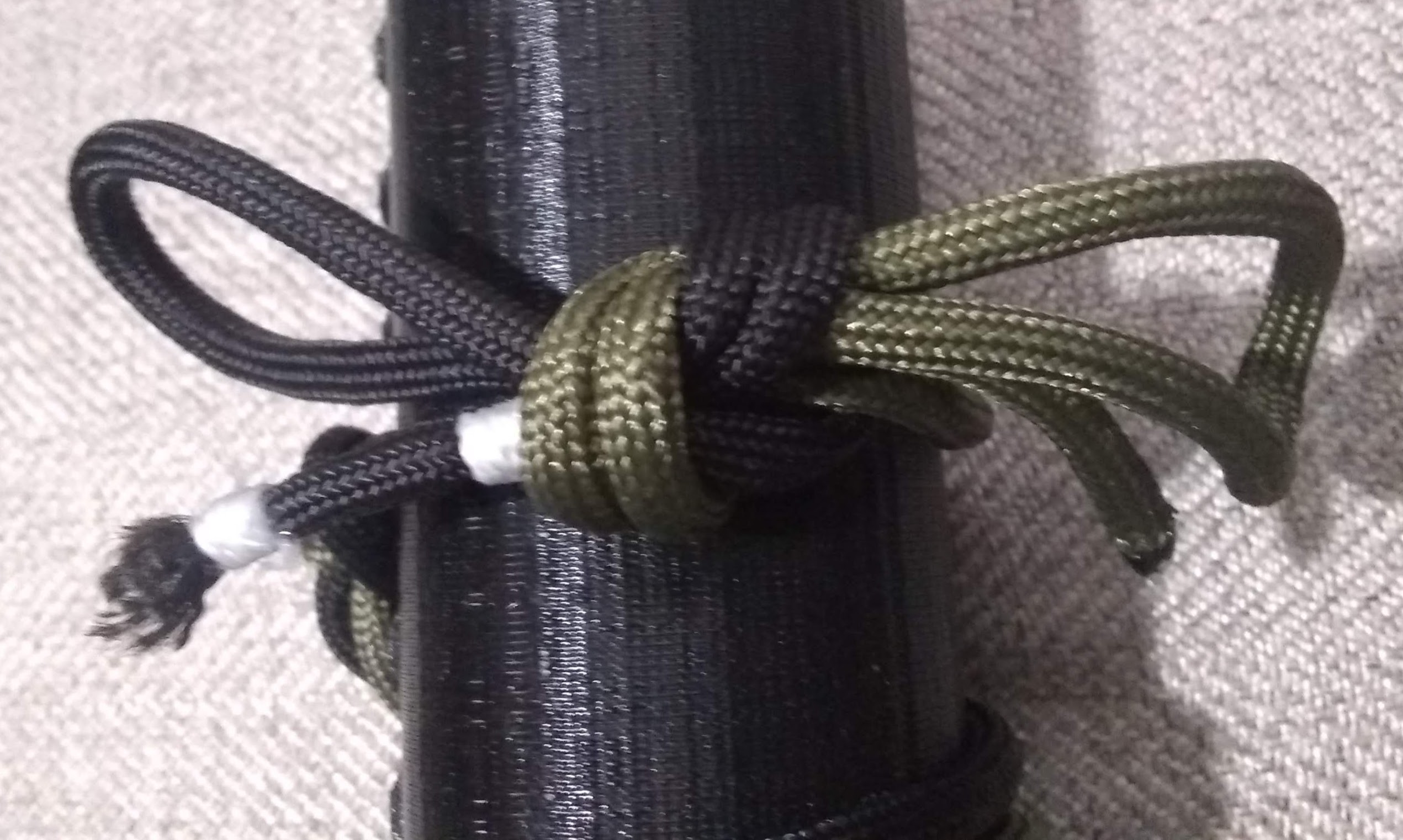 Slipped double constrictor knot, double-throw reef knot, & two-bight reef knot
Slipped double constrictor knot, double-throw reef knot, & two-bight reef knot
-
Double constrictor knot. The most manly of bindings. Use in place of clove hitch or right-angle knot. The old-timers say you have to cut it off; but with synthetic rope, untying is often perfectly feasible.
-
Slipped double constrictor knot. Use in place of clove hitch as a secure but easily untied binding.
-
Reef knot. Also ambiguously called a “square knot”, this is a good knot for binding against a convex surface – such as for reefing a sail, tying a sack shut or fastening your short-laced shoes.
The other “square knot”, so called by the British, is the Chinese friendship knot. It is decidedly the more square of the two.
Never use a reef knot away from a convex surface or for joining two ropes. That’s what a bend is for. Misusing a reef knot as a bend may get you killed.
- Double-throw reef knot. Variant H2H2s of the surgeon’s knot. Use in place of reef knot against flat or concave surfaces.
Unlike the standard reef knot, the double-throw variant is suitable as a bend. That’s why it can handle non-convex surfaces. But its best use is as a binding knot because, although it tightens well against a bindee, other bends significantly outperform it in jam-resistance and in maintaining rope strength.
-
Two-bight reef knot. For a decorative shoelace bow that’ll stay tied all day: first fold the ends over to form two bights, then simply tie them in a reef knot. It ain’t quick-release, but it’s a quality bow knot.
-
Freedom bow. A quick-release bow knot that keeps a man’s shoes well tied, in defiance of the king’s bidding, until he himself chooses to loosen them. A hard tug is required to untie this knot.
Most people use a standard shoelace knot (double-slipped reef), but it works loose easily. The reef knot’s grip seems to rely on its symmetry, and using bights for only half of the knot breaks that symmetry. The two-bight variant gives up the quick-release option in order to retain the symmetry. The freedom bow, on the other hand, makes up for its asymmetry by converting the half-wrap around each loop into a full wrap.
Hitches
-
Double constrictor knot (or slipped variant). This binding serves well as a simple pole hitch.
-
Cawley hitch. A good friction loop. Use in place of the midshipman’s hitch or taut-line hitch, for use in tensioning guylines or for mooring a boat to a tree. To tie down an aircraft, use nested pairs of Cawley hitches.
I tested eight friction loops for comparison. See results.
-
Cleat hitch. The right way to moor a boat to a dock.
-
Schwabisch hitch. A very good closed-system hitch for connection to a life-support line, in case you fall when climbing crazy heights.
-
Stalactite hitch. A friction hitch with enough grip to pull on a heavily loaded line, relieving the tension on one end of that line so that its knot can be untied. Also useful anywhere that a lengthwise pull on a rope or pole is needed, even if that object is slippery or tapered.
My stalactite hitch improves upon the stability of the five-turn variant of the gripping sailor’s hitch by finishing with a riding turn around its diagonal part. This enables it to handle cycles of jerky tensioning and detensioning.
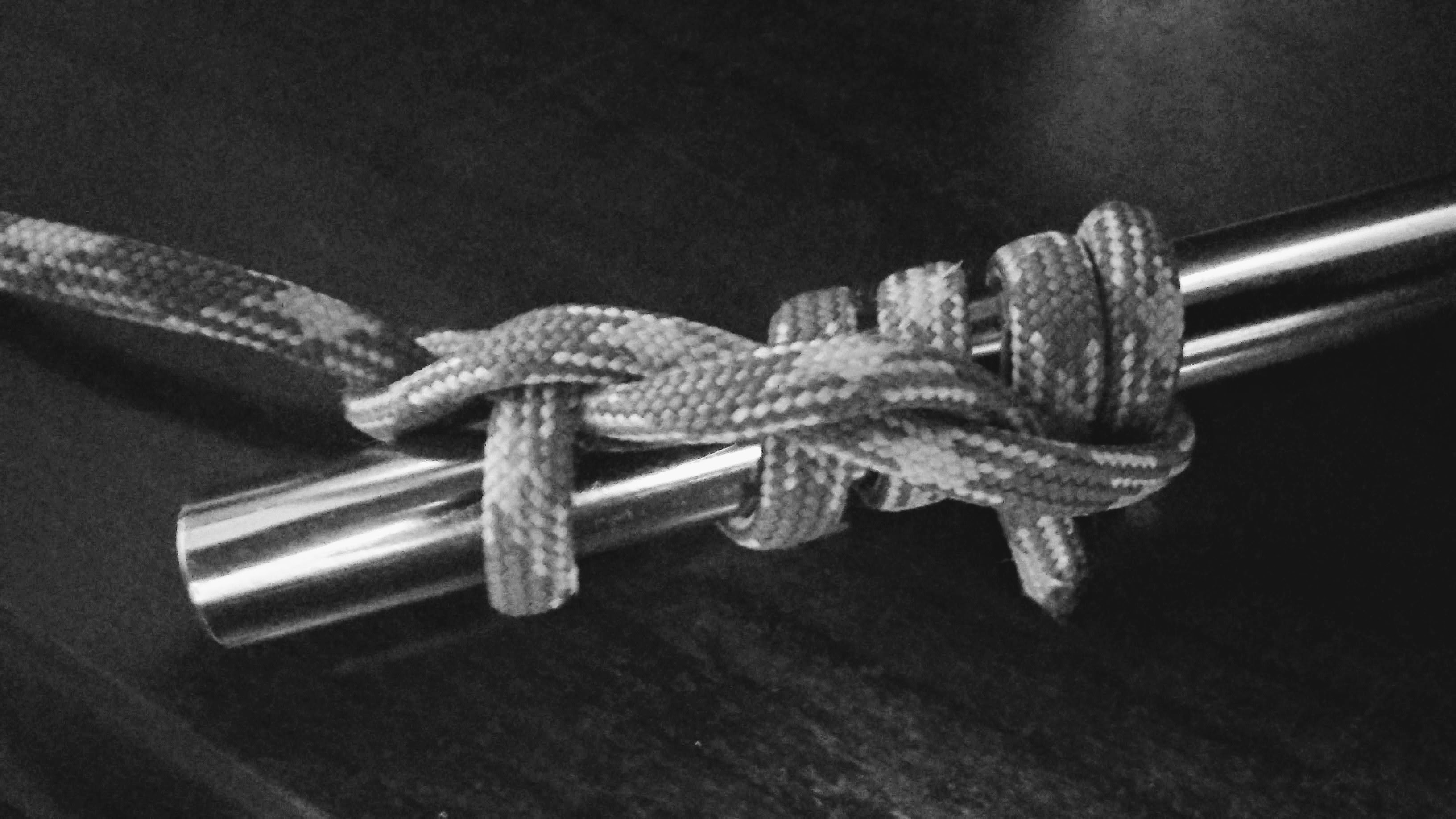 Stalactite hitch
Stalactite hitch
Compound knots
-
Trucker’s hitch (butterfly-Cawley variant). Use this compound hitch to secure a heavy load.
- Make a fixed upper loop with the alpine butterfly. Tie it far enough from your final anchor point to allow room for cinching.
- Pass the working end around the anchor point. This forms a lower loop.
- Hook onto the upper loop with a Cawley hitch.
- Adjust the Cawley hitch to tension the lower loop.
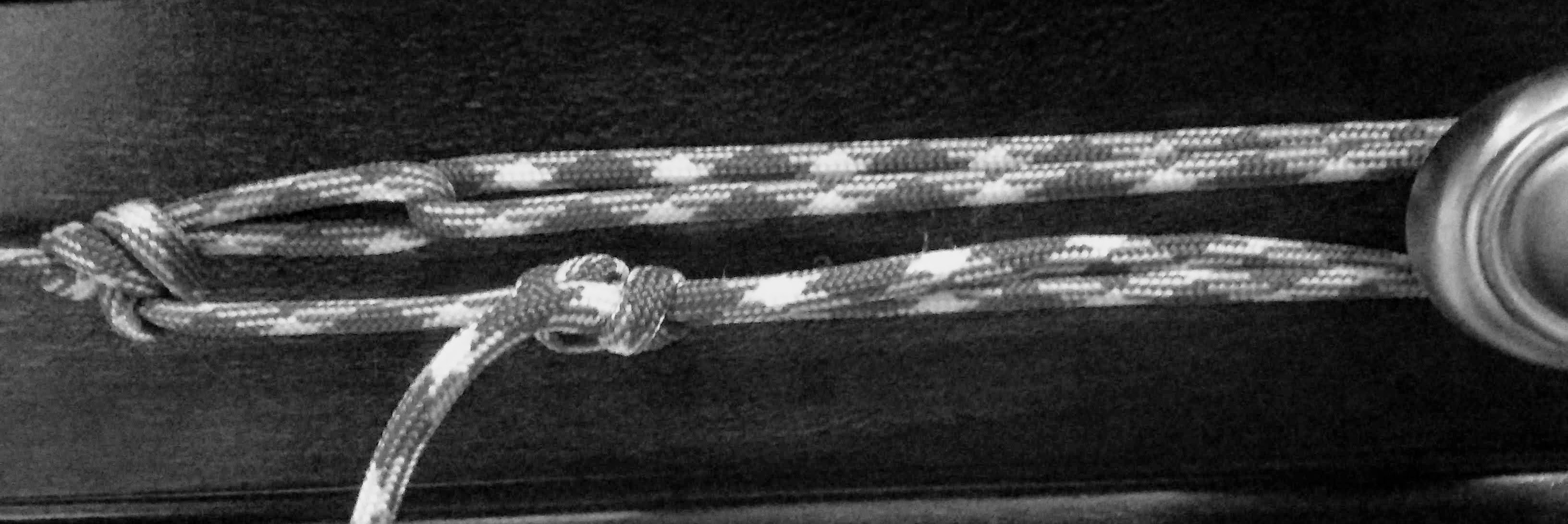 Butterfly-Cawley trucker’s hitch
Butterfly-Cawley trucker’s hitch
Different strokes for different ropes
Different types of cordage present different challenges.
- Good knots for bungee line
- Good knots for fishing line
- Good knots for flat straps (coming, maybe)